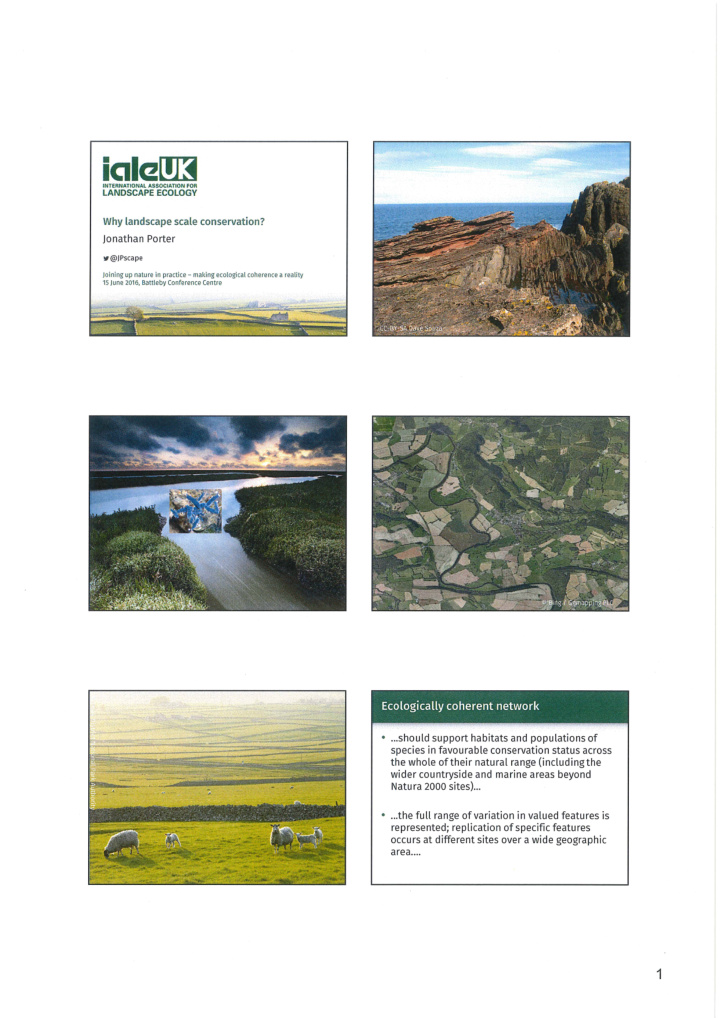



Ecologically coherent network • ...should support habitats and populations of species in favourable conservation status across the whole of their natural range (includingthe wider countryside and marine areas beyond Natura 2000 sites)... • ...the full range of variation in valued features is represented; replication of specific features occurs at different sites over a wide geographic area....
Lawton re ie : The essence of Landscape ecology is the what needs to be study of interactions, done to enhance the resilience and across space and time, coherence of between the structure and England s ecolo ical function of physical, network can be biological and cultural summarised in four components of landscapes; words: more, bigger, marine, freshwater, and on better and joined" land. Lawton, J.H., Brotherton, P.N.M., Brown, V.K., Elphick, C, Fitter, A.H., Forshaw, J., Haddow, R.W., Hilborne, S., Leafe, R.N., Mace, G.M., Southgate, M.P., Sutherland, W.J., Tew, T.E., Varley, J., & Wynne, G.R. (2010) Making Space for Nature: a r view of England's wildlife sites and ecological network. Report to Defra. "Landscape" means an area, as perceived by people, whose character is the result of the action and interaction of natural and/or human factors European Landscape Convention 2
Both cultural and biological diversity are central components of the ecosystem approach, and management should take this into account. Societal choices should be expressed as clearly as possible. Ecosystems should be managed for their intrinsic values and for the tangible or intangible benefits for humans, in a fair and equitable way. https://www.cbd.int/ecosystem/principles.shtml 3
Jonathan Porter jonathan@countryscape.org 4r@JPscape international association for IGlGLli S LANDSCAPE ECOLOGY LANDSCAPE CHARACTERISATIO : METHODS & APPLICATIONS I LANDSCAPE ECOLOGY -9 SEPTEMBER 2016, THE UNIVERSITY OF READI G, UK 4
Recommend
More recommend